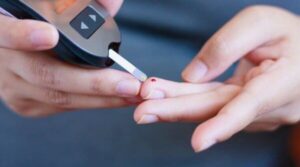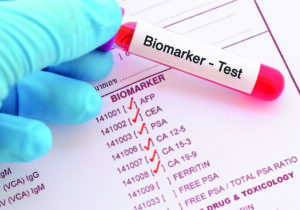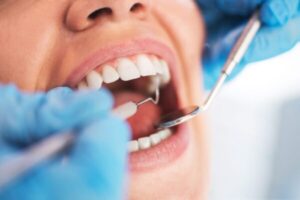Understanding Acne Scars
4 min readAcne Scars: Unveiling the Mystery and Discovering the Road to Recovery
Are you tired of looking into the mirror and seeing those pesky acne scars that refuse to fade away? You’re not alone. Acne scars can significantly impact a person’s self-esteem and confidence, making them self-conscious about their appearance. But fear not! In this blog post, we’ll delve into acne scars, their formation, and the various treatment options available to help you achieve that clear and smooth skin you’ve always desired. So, grab a coffee and join us on this recovery journey!
Acne scars result from inflammation caused by acne, which damages the skin’s collagen and underlying tissue. They can appear as textured or discoloured marks on the skin. To better comprehend the different types of acne scars, let’s take a closer look:
Types of acne scars
Atrophic Scars
These are flat, shallow depressions that occur when the skin loses collagen during healing. Atrophic scars are further divided into three categories:
- Boxcar Scars: Characterized by sharp, well-defined edges and a wide, U-shaped base.
- Rolling Scars: These have a soft, rounded appearance and create a wavy texture on the skin.
- Ice Pick Scars: Narrow, deep, and V-shaped ice pick scars resemble puncture marks on the skin.
Hypertrophic Scars
Raised and firm, these scars result from an overproduction of collagen during healing, including keloids.
Post-Inflammatory Hyperpigmentation (PIH)
Although not a true scar, PIH appears as a dark spot on the skin due to increased melanin production as a response to inflammation.
Treatment Options for Acne Scars
Now that we better understand acne scars, it’s time to explore the various treatment options available. Remember, it’s essential to consult with a dermatologist or a skincare professional before starting any treatment to ensure its suitability and effectiveness for your skin type and condition.
Topical Treatments:
- Retinoids: Retinoids, derivatives of vitamin A, can promote collagen production and cell turnover, which can help improve the appearance of acne scars.
- Alpha Hydroxy Acids (AHAs): AHAs can exfoliate the skin’s surface, promoting the regeneration of new skin cells and reducing the appearance of scars.
- Niacinamide: Niacinamide, a form of vitamin B3, has anti-inflammatory properties that can help reduce redness and pigmentation caused by acne scars.
Chemical Peels
Chemical peels use a chemical solution to remove the top layer of the skin, revealing a smoother and more even-toned surface underneath. This treatment can be effective for both atrophic scars and PIH.
Microdermabrasion
This non-invasive procedure involves exfoliating the skin with fine particles, encouraging the growth of new, smoother skin. Microdermabrasion can improve the appearance of superficial scars and PIH.
Microneedling
Microneedling, also known as collagen induction therapy, involves using a device with tiny needles to create micro-injuries in the skin. This triggers the skin’s natural healing process, promoting collagen production and reducing the appearance of scars.
Laser Resurfacing
This treatment uses focused light energy to remove the outer layer of the skin and stimulate collagen production. Laser resurfacing can be effective for treating atrophic and hypertrophic scars.
Dermal Fillers
Injectable fillers can fill in depressed scars, lifting the skin and creating a smoother appearance. This treatment is particularly effective for atrophic scars like boxcars and rolling scars. However, remember that dermal fillers are a temporary solution, and you may need to repeat the treatment every few months to maintain the results.
Subcision
This surgical technique involves cutting the fibrous bands beneath the skin that tether it to the underlying tissue, allowing the scar to rise and level out with the surrounding skin. Subcision is best suited for treating rolling scars.
Punch Excision
Punch excision is a surgical procedure that involves removing the scar tissue with a small, cookie-cutter-like tool and then suturing the wound closed. This method is ideal for treating ice pick and small boxcar scars.
Cryotherapy
Cryotherapy involves freezing the raised scar tissue with liquid nitrogen, causing it to peel off and reveal smoother skin. This treatment is suitable for hypertrophic scars.
Steroid Injections
Injecting corticosteroids into hypertrophic scars can help reduce inflammation, flatten the scar, and improve its appearance.
Choosing the Right Treatment
- With so many treatment options available, choosing the right one for your specific type of acne scar is essential. Here are a few tips to help you decide:
- Consult a dermatologist or skincare professional: They can assess your skin and recommend the most appropriate treatment for your acne scars.
- Consider your skin type: Some treatments may suit specific skin types. For example, darker skin tones may be more prone to hyperpigmentation after certain treatments, such as laser resurfacing.
- Set realistic expectations: While many treatments can significantly improve the appearance of acne scars, complete scar removal may not be possible. Be prepared for multiple treatments and maintenance sessions for the best results.
- Budget considerations: Some treatments, such as laser resurfacing and dermal fillers, can be costly. Make sure to factor in the cost and frequency of treatments when making your decision.
- Be patient: Acne scar treatments take time to show results, and following your treatment plan is essential to be patient and consistent.
Conclusion
Acne scars can be a constant reminder of past breakouts, but with the right treatment and guidance from a professional, it’s possible to improve their appearance and regain their confidence significantly. Remember, every person’s skin is unique, and what works for one person may not work for another. It’s crucial to be patient, stay committed to your treatment plan, and maintain a positive attitude throughout the process.
You’ll soon achieve the clear, smooth, and radiant skin you’ve always dreamed of with the right approach and mindset!





